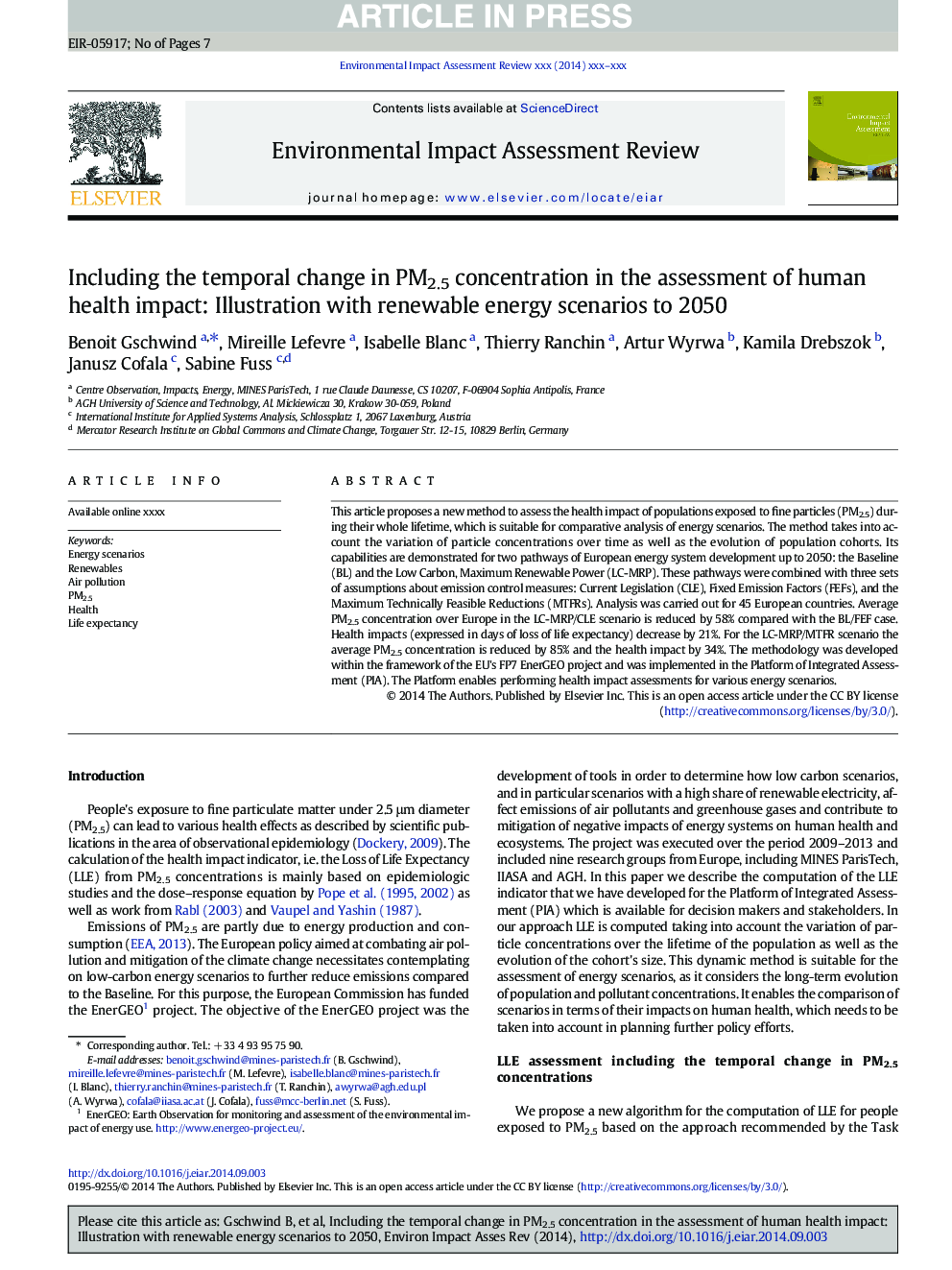| Article ID | Journal | Published Year | Pages | File Type |
|---|---|---|---|---|
| 7465342 | Environmental Impact Assessment Review | 2015 | 7 Pages |
Abstract
This article proposes a new method to assess the health impact of populations exposed to fine particles (PM2.5) during their whole lifetime, which is suitable for comparative analysis of energy scenarios. The method takes into account the variation of particle concentrations over time as well as the evolution of population cohorts. Its capabilities are demonstrated for two pathways of European energy system development up to 2050: the Baseline (BL) and the Low Carbon, Maximum Renewable Power (LC-MRP). These pathways were combined with three sets of assumptions about emission control measures: Current Legislation (CLE), Fixed Emission Factors (FEFs), and the Maximum Technically Feasible Reductions (MTFRs). Analysis was carried out for 45 European countries. Average PM2.5 concentration over Europe in the LC-MRP/CLE scenario is reduced by 58% compared with the BL/FEF case. Health impacts (expressed in days of loss of life expectancy) decrease by 21%. For the LC-MRP/MTFR scenario the average PM2.5 concentration is reduced by 85% and the health impact by 34%. The methodology was developed within the framework of the EU's FP7 EnerGEO project and was implemented in the Platform of Integrated Assessment (PIA). The Platform enables performing health impact assessments for various energy scenarios.
Related Topics
Physical Sciences and Engineering
Energy
Renewable Energy, Sustainability and the Environment
Authors
Benoit Gschwind, Mireille Lefevre, Isabelle Blanc, Thierry Ranchin, Artur Wyrwa, Kamila Drebszok, Janusz Cofala, Sabine Fuss,
